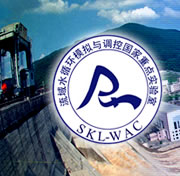《Journal of Hydrology》刊登“气候变化对中国东部钱塘江流域上游的水文影响”
作者:Yue-Ping Xu, Xujie Zhang, Qihua Ran , Ye Tian
刊物:《Journal of Hydrology》, 2013年3月,483卷,51-60页
关键字:SWAT模型;气候变化;兰江河;升级可靠性加权平均法
摘要:由于气候改变和人类活动一直持续影响着地球水文循环过程,因此为了了解未来水资源的潜在变化和水灾害,并给区域水资源管理提供理论和技术支撑,分析气候变化的水文影响显得至关重要,尤其是在区域尺度上。但是,评估气候变化对水文或水资源的影响存在很大的不确定性。故本研究,采用SWAT模型来研究2011年到2100年期间气候变化对中国东部钱塘江流域上游的水文影响,并且设置A1B、A2和B1三种不同的排放情景在未来三个不同时间段采用升级可靠性加权平均法大气环流气候考虑其不确定性。在水文模型中利用这些预测信息,然后调查气候变化对降水、潜在蒸散发以及河流径流的影响,并利用模型校准和验证结果证明SWAT模型的合理性。最终结果表明,几乎在未来所有时间段所有的排放情景下,年径流量可能会减少。尤其在金华地区,应该注意到年径流量是持续减少的,预示着该地区未来水资源供给不足。同时,月尺度模拟显示,径流量减少最多出现在冬季,而夏季呈现径流量增加最大,这意味着将会出现更多的水灾害现象。但是,值得一提的是,不同时间段不同排放情景下变化情况是不同的,这也意味着在影响分析中仍存在大量的不确定性。
Impact of climate change on hydrology of upper reaches of Qiantang River Basin, East China
Authors: Yue-Ping Xu, Xujie Zhang, Qihua Ran , Ye Tian
Journal: Journal of Hydrology; Volume 483, 13 March 2013, Pages 51–60
Key words: SWAT; Climate change; Lanjiang River; Upgraded reliability ensemble averaging
Abstract: The hydrological cycle has been substantially influenced by climate change and human activities. It is therefore of utmost importance to analyze the impact of climate change on hydrology, particularly on a regional scale, in order to understand potential future changes of water resources and water-related disaster, and provide support for regional water management. However, during the evaluation of climate change impact on hydrology or water resources, large uncertainty exists. In this paper, the Soil Water Assessment Tool (SWAT) model is used to investigate the potential impact of climate change on hydrology of the upper reaches of Qiantang River Basin, East China, for the future period 2011–2100. The uncertainty is considered by employing upgraded reliability ensemble averaged GCM climate projections under three emission scenarios A1B, A2 and B1 for three different stages of the future period. These projections are downscaled and used in the hydrological model. Impact of climate change on precipitation, potential evapotranspiration and river runoff is then investigated. The model calibration and validation outcomes show reasonable performance of the SWAT model. The final results suggest that annual river runoff will likely decrease almost under all emission scenarios and time stages of the future period. Particularly, at Jinhua Station, substantial decrease of annual river runoff can be noticed, indicating less water resource possibly available for the region in future. Simulated monthly patterns show that the largest decrease will likely occur in winter while increases will occur in summer, implying possible more water-related disasters in this region. However, it is also noticed that the change signs/amount could be different under different emission scenarios and time stages, indicating large uncertainty involved in the impact analysis.
原文链接:http://www.sciencedirect.com/science/article/pii/S0022169413000322
翻译:王丽婷; 审核:刘淼

